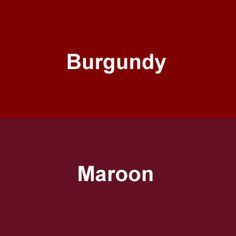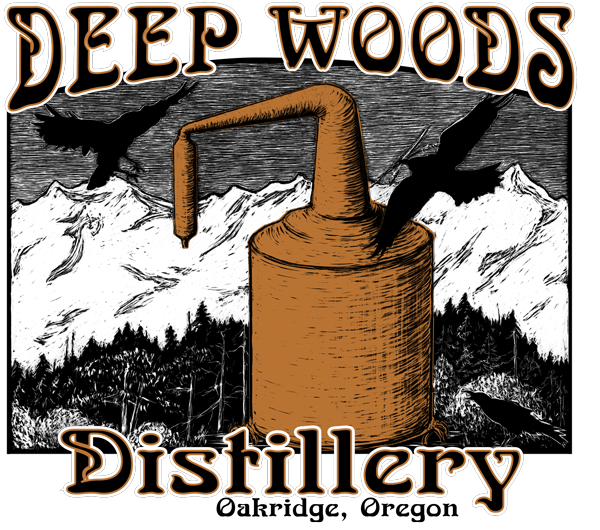
Characteristics Of Maroon Vs Burgundy Colors
Maroon Color
Maroon is a shade of red that differs from burgundy in various aspects. It is a rich and warm color, often described as a dark reddish-brown. Maroon evokes a sense of elegance and timelessness, making it a popular choice in fashion and design. Unlike burgundy, maroon lacks the prominent purple undertones and leans more towards a true red hue. This gives maroon a vibrant and bold appearance, adding a touch of sophistication to any setting.
Burgundy Color
On the other hand, burgundy exudes a different aura compared to maroon. Known for its deep and luxurious appearance, burgundy resembles the color of red wine, showcasing a rich and opulent tone. One of the distinguishing features of burgundy is its subtle hints of violet or purple undertones, adding a complex and regal quality to its deep purplish-red hue. These purple undertones provide a sense of depth and sophistication to the color, making it a popular choice in both fashion and interior design.
Aesthetics Of Maroon Vs Burgundy Hues
Visual Appearance
When comparing maroon and burgundy, their visual appearance plays a vital role in distinguishing between the two hues. Maroon, a dark reddish-brown shade, emanates a rich and warm vibe that exudes elegance and timelessness. On the other hand, burgundy presents a deep and luxurious look akin to the color of red wine, reflecting opulence in its tone.
Undertones And Complexity
The undertones and complexity of maroon and burgundy further separate these hues aesthetically. Maroon, with its leaning towards a true red hue, lacks the prominent purple undertones that define burgundy. This absence gives maroon a vibrant and bold characteristic, elevating its sophistication in various settings. In contrast, burgundy’s subtle hints of violet or purple undertones contribute to its deep purplish-red hue, adding a layer of complexity and regal quality to the color palette.
Origins Of Maroon Vs Burgundy Colors
Maroon’s Historical Roots
Maroon, a deep reddish-brown shade, has historical roots that date back to ancient times when it was often associated with robust qualities like strength and bravery. Over the years, maroon has evolved to symbolize sophistication and elegance in various contexts, making it a timeless choice for those seeking a classic yet bold aesthetic.
Burgundy’s Cultural Significance
On the other hand, burgundy takes its name from the renowned Burgundy region in eastern France, where the color was traditionally linked to royalty and opulence. Its deep purplish-red hue, with subtle hints of violet or purple undertones, adds a layer of complexity and richness to any setting. Burgundy’s cultural significance lies in its ability to evoke a sense of luxury and sophistication inspired by the fine wines that share its name.
Aesthetics Of Maroon Vs Burgundy Hues
Visual Appearance
When comparing maroon and burgundy, their visual appearance plays a vital role in distinguishing between the two hues. Maroon’s dark reddish-brown shade exudes a rich and warm vibe, while burgundy reflects opulence with its deep and luxurious look reminiscent of red wine.
Undertones And Complexity
Maroon’s vibrant and bold characteristic stems from its true red hue, which lacks the prominent purple undertones found in burgundy. In contrast, burgundy’s deep purplish-red hue, with hints of violet, adds a regal quality and complexity to its color palette, making it a versatile and sophisticated choice for various settings.

Symbolism And Meanings Of Maroon Vs Burgundy
Maroon Symbolism
Maroon, with its deep reddish-brown hue, symbolizes strength and bravery, reflecting its historical roots dating back to ancient times. Over the years, maroon has evolved to represent sophistication and elegance, making it a timeless choice in various contexts for those seeking a classic yet bold aesthetic.
Burgundy Connotations
Burgundy, named after the esteemed Burgundy region in eastern France, is associated with royalty and opulence. The deep purplish-red shade with subtle violet undertones adds complexity and richness. Burgundy’s cultural significance stems from its ability to evoke luxury and sophistication inspired by the fine wines that share its name.
Fashion And Design Trends Of Maroon Vs Burgundy
Maroon In Fashion
Maroon, a deep reddish-brown shade, has long been a symbol of strength and bravery, tracing its origins back through history. Its rich tones have evolved to represent sophistication and elegance, making it a timeless option across various fashion contexts. Maroon’s classic yet bold aesthetic continues to resonate with individuals seeking a refined and powerful look.
Burgundy In Home Decor
Burgundy, derived from the prestigious Burgundy region in France, is synonymous with royalty and opulence. The color’s deep purplish-red hue, accented by subtle violet undertones, brings a sense of richness and complexity to interior design. Burgundy’s cultural significance lies in its ability to evoke luxury and sophistication, drawing inspiration from the world of fine wines that share its distinguished name.
Psychology Of Maroon Vs Burgundy Shades
Impact On Mood And Behavior
When comparing Maroon and Burgundy shades, their psychological impact on mood and behavior is notable. Maroon, with its deep reddish-brown hue, exudes strength and sophistication, invoking feelings of elegance and power in individuals. This color choice can inspire confidence and a sense of refinement in various settings. On the other hand, Burgundy, known for its deep purplish-red undertones, is associated with opulence and luxury. In home decor, this color can create an atmosphere of richness and complexity, evoking a regal ambiance that resonates with a sense of grandeur.
Emotional Associations
Maroon and Burgundy evoke distinct emotional associations based on their unique shades and cultural connotations. Maroon, as a symbol of bravery and endurance, can elicit feelings of passion, energy, and sophistication. Individuals may feel empowered and bold when surrounded by this color. In contrast, Burgundy, linked to the prestigious region of France from which it derives its name, conveys a sense of royalty and nobility. The deep, luxurious hue of Burgundy is often linked to feelings of elegance, sophistication, and refinement, aligning with its historical and cultural significance in conveying wealth and opulence.

Popularity And Usage Of Maroon Vs Burgundy
Consumer Preferences
Consumer preferences for Maroon and Burgundy are influenced by various factors such as personal style, cultural perceptions, and current trends. While both colors are associated with sophistication and richness, individual preferences may vary based on the desired aesthetic impact. Some consumers may gravitate towards the deeper, regal tones of Burgundy for formal occasions or luxurious settings, seeking to make a statement of opulence and elegance. On the other hand, those favoring Maroonmay appreciate its reddish-brown undertones for a more classic and refined look, often chosen for its association with strength and timeless appeal. Understanding consumer preferences can aid designers and marketers in creating products that cater to specific target audiences.
Application In Art And Design
In the realm of art and design, both Maroon and Burgundy offer versatility and depth to creative projects across various mediums. Artists and designers often leverage the richness of these hues to evoke specific emotions or convey symbolic meanings in their work. Maroon may be utilized to express themes of power, passion, and sophistication, adding a bold and confident touch to compositions. On the other hand, Burgundy can bring an element of luxury, refinement, and regality to visual creations, enhancing the overall aesthetic with its opulent allure. The unique characteristics of each color allow for diverse applications in art, design, and fashion, catering to a wide range of creative expressions.
Complementary Colors For Maroon And Burgundy
Color Pairing Suggestions
When considering complementary colors for Maroon and Burgundy, it is important to select hues that enhance the richness and depth of these shades. Some effective pairings include:
| Maroon | Burgundy | Complementary Color |
|---|---|---|
| Red | Gold | Yellow |
| Navy Blue | Forest Green | Olive Green |
| Cream | Light Gray | Beige |
| Mustard | Eggplant | Plum |
Creating Harmonious Color Schemes
To create harmonious color schemes with Maroon and Burgundy, it is vital to maintain a balance between the dominant and accent colors. Incorporating neutrals such as beige, cream, or light gray can help soften the boldness of these deep hues. Additionally, adding metallic accents like gold or silver can elevate the luxurious feel of the color palette. Experimenting with textures and patterns will also enhance the visual interest of the design, making the overall aesthetic more dynamic and sophisticated. By carefully selecting complementary colors and maintaining a sense of equilibrium, designers can achieve stunning and cohesive color schemes with Maroon and Burgundy.
Conclusion
Final Thoughts On Maroon And Burgundy
When it comes to selecting complementary colors for Maroon and Burgundy, designers should aim for hues that enhance the richness and depth of these shades. Effective pairings include red and gold with Maroon, and navy blue and forest green with Burgundy. Incorporating colors like yellow, olive green, beige, and plum can help create harmonious color schemes that bring out the sophistication of Maroon and Burgundy. Maintaining a balance between dominant and accent colors is key, with the addition of neutrals like beige, cream, or light gray helping to soften the boldness of these deep hues. Adding metallic accents such as gold or silver can elevate the luxurious feel of the palette, while experimenting with textures and patterns can enhance the visual interest of the design. By carefully choosing complementary colors and maintaining equilibrium, designers can achieve stunning and cohesive color schemes with Maroon and Burgundy.
Choosing The Right Shade
When deciding between Maroon and Burgundy, it’s essential to consider the specific characteristics of each shade. Maroon tends to have a warmer and more brown undertone compared to the rich and deep purplish red of Burgundy. Maroon exudes a sense of warmth and earthiness, while Burgundy conveys opulence and sophistication with its purple undertones. Depending on the desired ambiance and style of a design project, choosing between Maroon for a cozy and inviting feel or Burgundy for a luxurious and elegant vibe is crucial to achieving the desired aesthetic. Both shades offer versatility and can be paired with a range of complementary colors to create visually striking and cohesive color schemes.
FAQ About Maroon Vs Burgundy Color: Shades Of Red Dissected
Q: What is the main difference between maroon and burgundy colors?
A: The main difference lies in their undertones. Maroon has more of a brown undertone, giving it a warmer and more earthy hue, while burgundy has a deep purple or blue undertone, making it appear cooler and darker.
Q: How can one distinguish between maroon and burgundy colors?
A: Maroon tends to be more reddish-brown, resembling the color of chestnuts, while burgundy leans towards a deep reddish-purple, similar to the color of red wine.
Q: Are maroon and burgundy interchangeable terms?
A: Although often used interchangeably in everyday language, they refer to specific shades on the red spectrum. It’s essential to understand the subtle differences between the two for precise color description and identification.
Q: In what contexts are maroon and burgundy colors commonly used?
A: Maroon is often associated with autumnal and rustic themes, while burgundy is favored in formal settings, such as luxurious fashion, interior design, and wine-related products due to its rich and sophisticated appearance.
Q: Can maroon and burgundy be complementary colors in design?
A: Yes, they can complement each other beautifully. Pairing maroon and burgundy together can create a harmonious color scheme with depth and elegance, especially when balanced with neutral tones like cream, beige, or gray.

At Deep Woods Distillery, we try to put an essence of the Great Oregon Forest in each bottle of hand-crafted liquor we make. All of our spirits are made from scratch in Oakridge, Oregon, from select ingredients.